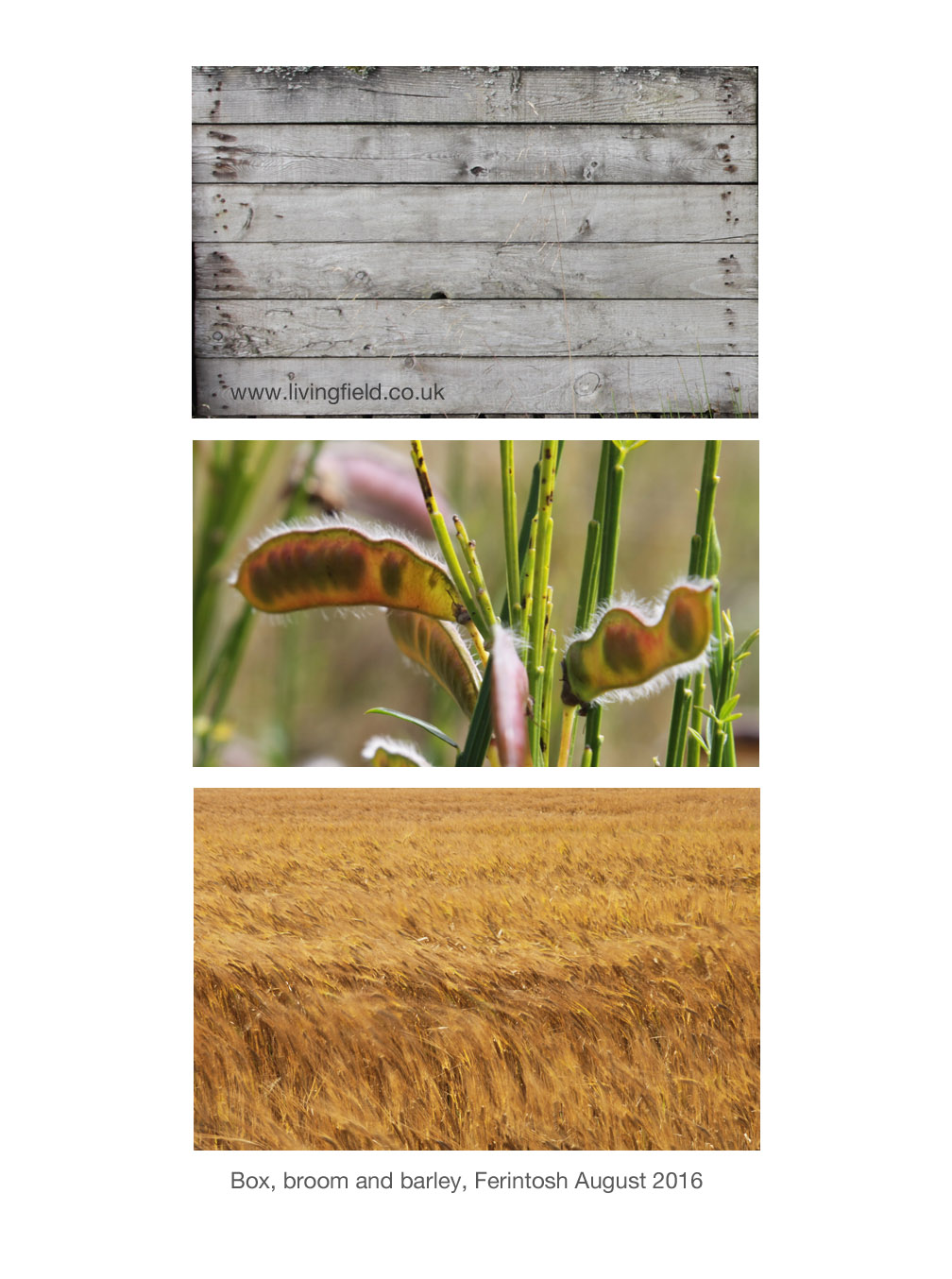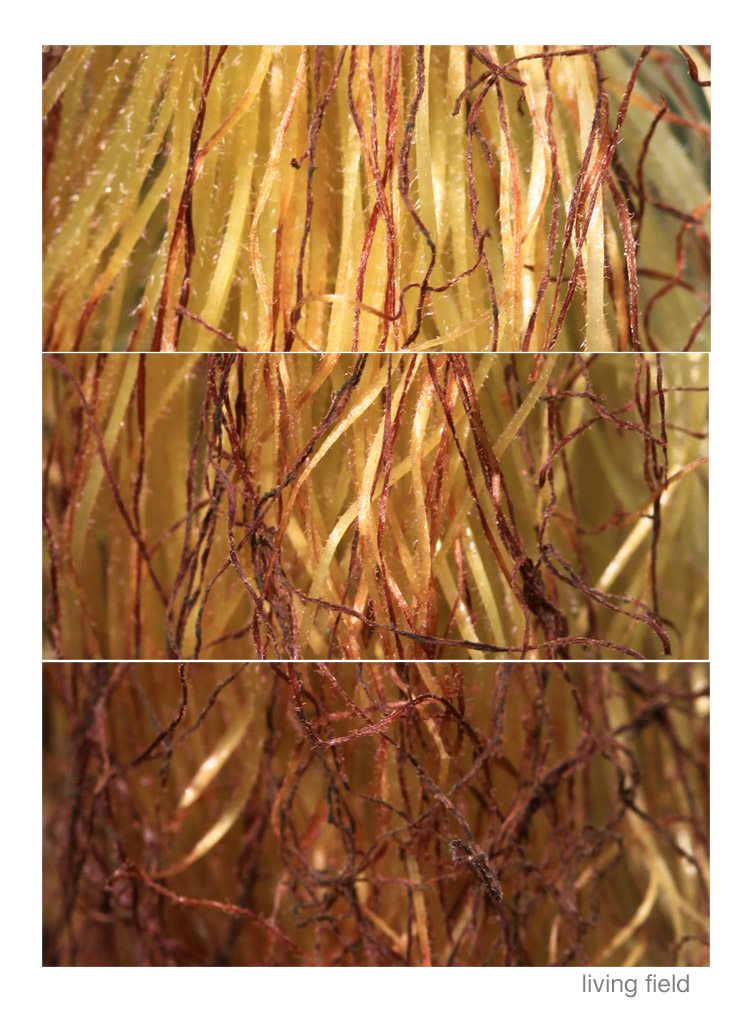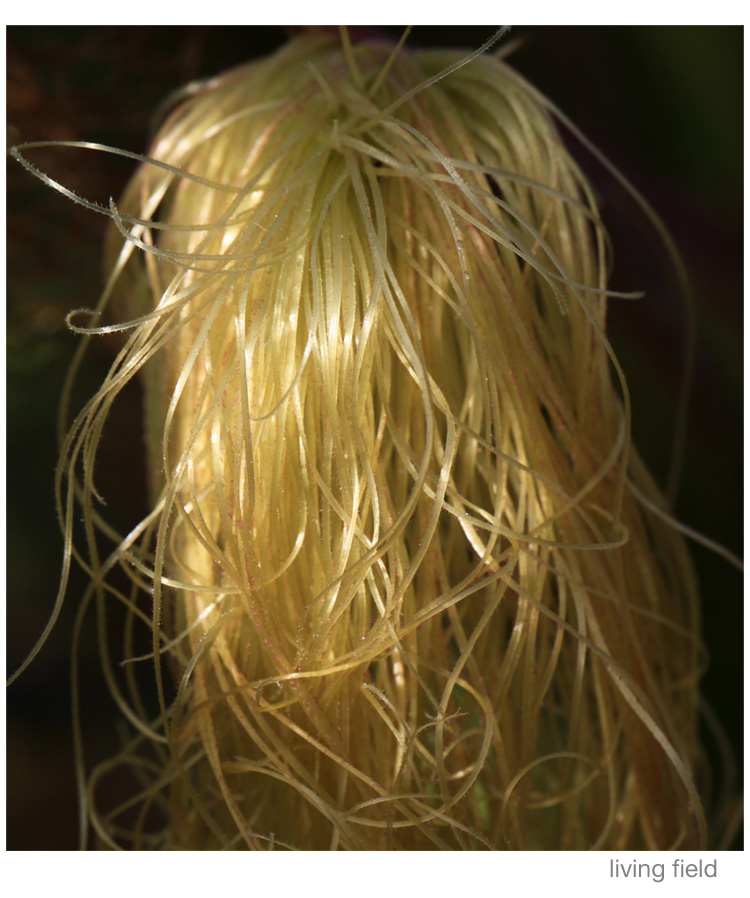Bere and barley both named in Andrew Wight’s journeys of 1778-1784. Bere as the substrate for aquavitae. Bere as a nurse for grass. Bere seed maintaining its mass to volume ratio. Bere fertilised with seaweed.
A note in the Living Field’s Bere line …..
Andrew Wight, a farmer from East Lothian was commissioned to undertake a series of tours in the late 1700s to examine and report on the state of agriculture in Scotland. His work was published anonymously between 1778 and 1784, but is invariably referred to by his name, and quite rightly, since it was a major undertaking and the best single guide to the state of agriculture during the long ages of improvement (reference below).
He travelled by horse to mainland areas, meeting farmers, tenants and landowners and noting the improvements, or lack of them, to husbandry .
Throughout he refers to both barley and bere, sometimes in the same place, which suggests he considered them different things, presumably bere being the 6-(or 4) row types and barley the 2-row.
He related many anecdotes about bere. Here are a few of them on the journey north from Inverness to Sutherland.
Great quantities of Aquavitae, Ferintosh distillery, Black Isle
He visited the area around Ferintosh, on the Black Isle, owned by Forbes of Culloden. Ferintosh was …. “famous for the great quantities of aquavitae made there under exemption from duty. I am told that there are no fewer than 1000 distillers in that place, wholly occupied in making spirits, utterly neglecting their land, which is in a worse state than for many miles around”. He goes on to write “great quantities of bear are imported from the neighbourhood, and malted there as Ferintosh bear: Not only so, but quantities of aquavitae made elsewhere are carried to market as Ferintosh”. [Ninth Survey Vol IV.I, p. 238].
Of those areas supplying the distilleries was Fowlis, which ‘ .. near the Cromarty Firth has access to seaweed and lime is imported from Portfoy … and bear finds a ready market at Ferintosh.” [p 239]
So you can imagine all these bear harvests from all around, going, not into mouths of people and animals as meal, but to distilleries at Ferintosh, and whisky coming out for export; and everyone so involved in making the stuff that the land went to waste.
But these days bear grain contributes to only a few specialist malts. Most are made from two-row barley.
Wight implied that exemption from duty was granted as a monopoly to that particular estate before the Union, and became ‘destructive to fair trade’ and ‘the occasion of manifold frauds’. Back-handers and dodgy labelling – what’s changed? But the distillery went out of business in around 1785, presumably because other distillers complained abut the unfair exemption.

Bear as a nurse crop for grass
At Invergordon, he writes …. ‘Wheat on this strong land was very good; barley after turnip excellent; beans and pease are never neglected in the rotation; oats in their turn make a fine crop; but above all, the old pasture excels. Later, at the same place, he tells of a method used to protect new-sown grass pasture.
The farmers anticipated a demand for hay or grazing the next year that current grass fields could not supply. So what could they do? They could sow more grass late the present year (September), but what could be done to avoid the seedling grass being damaged over the winter. The solution was to sow grass (which then included various legumes and ribwort plantain with rye-grass) and then … he related….
‘Three firlots of bear were sowed at the same time upon the acre, intended as a cover for grass during the winter …… The bear grew vigorously, and covered the surface during the severe months, but died away on the approach of warm weather.’ The bear seed was sacrificed, it seems, to solve the problem ‘when grass-feeds must be sown in the wrong season’. [Ninth Survey, Vol IV.I, p. 248-250]
Bere fertilised with seaweed
Repeatedly, the writer points to farmers who use lime or marl to reduce acidity, and dung to replenish nutrients taken from the soil by previous crops. Soil fertility was probably the major limitation to maintaining yield.
At Lochbeg, Sutherland, about Mr Gilchrist, the proprietor, he writes “His mode of cropping is one half (the land?) under bear, manured with sea-weed, which is spread on the ground directly, and mixed with soil in spring in two ploughings. Three firlots sowed yield seven bolls per acre.” [Ninth Survey, Vol IV.I, p 307].
Bere seed maintaining its mass to volume ratio
On the Route Homeward, he calls in at Castle Grant. “One thing is extremely remarkable with respect to bear on this farm. Though, time out of mind, no feed has been used but what is produced in the farm itself, yet it never degenerates. To this day a boll of bear, measured by a firlot of 32 pints weighs 20 stone Amsterdam’. And he goes on to write that it degenerates every where else after three or four years sowing, ‘Yet this country lies high, and the climate is cold and stormy.’
An uncertainty in interpretation here seems to be what is meant by the word ‘degenerates’. All cereal harvests consist of grain (seed) that is used for food or sale and the supporting and protective ‘stuff’ around the grain – the stem, the spiky awns, the coverings. A good harvest has a high proportion of grain to all the rest. But grains will only grow to their full extent if they have enough nutrients from the soil.
We have noticed in the Living Field Garden, where bere and other cereals are maintained by saved seed, that the plants might put out all the supporting and protective materials, but if nutrients are short, then the grains do not fully fill. The resulting harvest is not heavy per unit volume of material.
A crucial feature of the bere on the estate that Mr Wight refers to seems to be that the ratio of volume to mass of grain (firlots to Amsterdam stones) is maintained over time. The heaviness does not decline presumably because soil nutrients removed by the crops are replaced by nutrients from elsewhere on the farm and this happens ‘time out of mind’.
This may be a case of highly effective, scientific, nutrient management centuries ago – before labs, remote sensing and intelligent machines.
Farewell Mr Wight
And he writes a farewell to Volume IV.I: “Having now no ground to survey, and having been long out, I proceeded with the utmost expedition homeward, to make up the loss that my absence occasioned in my private affairs.”
Many thanks Mr Wight!
[There will be more from Andrew Wight in future notes on the Bear line – rhymes with hairline].
Sources, references, contacts
Wight, A. 1778-1784. Present State of Husbandry in Scotland. Exracted from Reports made to the Commissioners of the Annexed Estates, and published by their authority. Edinburgh: William Creesh. Vol I, Vol II, Vol III Part I, Vol III Part II, Vol IV part II, Volume IV Part II. All available online via Google Books. With thanks.
Ayrshire in the age of improvement. Contemporary accounts of agrarian and social improvement in late eighteenth century Ayrshire. 2002. Edited by David McClure. Published by Ayrshire Archaeological and Natural History Society. [The introduction gives background to Andrew Wight’s mission and journeys.] Available online.
See also on the Ferintosh Distillery (closed 1785): lost distillery.com/06ferintosh/ryefield.html
For a growing list of bere notes, articles and recipes on this site: Bere line …



